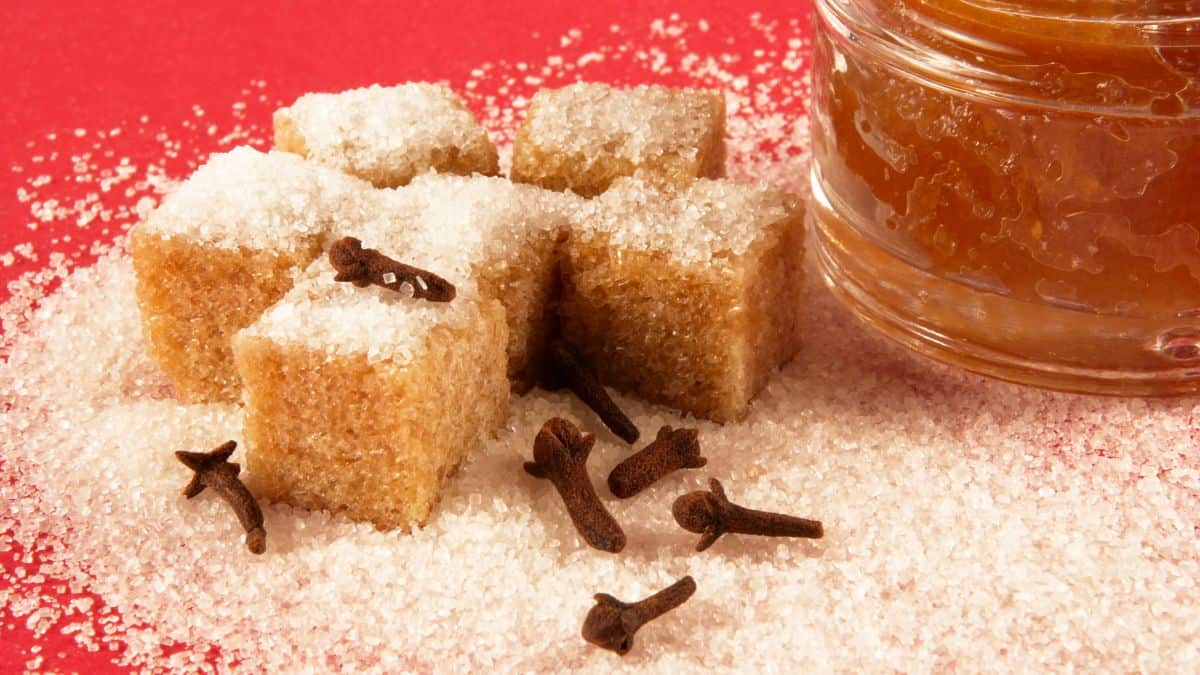Have you ever had food that was simply too spicy? The spiciness is caused by the chemical capsaicin, which is found in most types of chili. Some people add sugar to make their food thicker. So you may come to wonder, does sugar make things spicier? This article will discuss everything you need to know about that in detail.
No, sugar doesn’t make things spicier. Sugars aid in reducing heat by absorbing oils and altering the flavor. To balance out flavors in a meal with too much
Of course, the same quantity of heat can be delectable for some and excessive for others. However, if it’s too spicy, you’ll need to know how to tone it down. So, if you’ve over-seasoned your dinner and need to make it less spicy, add some sugar. Continue reading if you want to learn more about adding sugar to your meals!
How Does Sugar Make Things Less Spicy?
The spiciness is caused by the chemical capsaicin (kap-SAY-sin), which is found in most types of chili. Other chemicals, such as piperine, which is found in black pepper, may also cause your food to become overly hot.
An excellent strategy to reduce spiciness is to add sugar to a spicy dish. Honey or a pinch of sugar should be enough. Sugar or other sweeteners, like acid, give a new flavor dimension that can help to balance the spiciness. This one comes with caution, as you should only use a small quantity and taste frequently to ensure that your savory food does not taste like dessert.
Sugars That Are Little Natural Or Processed Are Good For You.
Highly processed sweeteners, such as white sugar, contain fewer nutrients than minimally processed sweeteners like maple syrup or honey. However, because the levels of these nutrients are so small, they are unlikely to have a significant effect on your health. All sugar sources are the same for your body.
Furthermore, your body does not give these natural sweeteners any particular treatment. All sugar sources are broken down into simple sugars termed monosaccharides by the digestive tract.
Sugar Can Boost Your Energy Right Away
Sugar is a necessary component of a productive diet. Sugar is broken down into glucose, which is the body’s primary source of energy. Moreover, you wouldn’t be able to keep up with your hectic schedules if you didn’t have glucose.
Adding Sugar To Your Sauce Will Increase Its Calorie Content
Unfortunately, adding sugar to a spicy sauce will increase its calorie content. The majority of sauces made with spicy peppers, vinegar, and a few spices have few or no calories.
The number of calories per teaspoon will vary depending on the type of sugar used, much like the sweetness level. Agave nectar or syrup is the sweetest form of sugar and is frequently listed high on numerous charts. The delicious aromas of habanero chilies go well with agave nectar, which has a whopping 21 calories per teaspoon.
Hot Sauce Thickens With Sugar.
Even though sugar is not a thickening agent, it will thicken a sauce even in little amounts. Sugar dissolves in water and other liquids to provide a “thicker-than-water” consistency. Whether granulated, brown, or powdered, Sugars will all thicken your sauce by interacting with other liquids and generating a thicker consistency.
The thickness of your sauce will be determined by the ratio of sugar and other ingredients to liquid.
How Do Spicy And Sweet Flavors Balance Each Other?
For generations, cultures worldwide have praised the blending of flavors. For a spicy and sweet combination, consider the chili-dusted mangoes with xocoatl.
In recent years, stores have become more readily available condiments such as sweet chili sauce and hot honey, and chefs have continued to experiment with spicy and sweet in professional kitchens, matching chile crisp, for example, not just with noodles but also with ice cream and chocolate.
When it comes to unusual flavor combinations, it’s all about the balance. Our taste buds have receptors that process spiciness, and the capsaicin in peppers binds to these receptors. This causes heat and burning sensation as well as the possibility of sweating. The sweetness balances this peppery flavor.
It’s why, after eating something hot, you’re advised to drink milk. Fat aids in removing capsaicin, but did you know that carbohydrates can also help reduce heat? Sugars can assist soothe some of that spiciness by coating your tongue, resulting in flavor balancing and allowing people to handle spicy foods. If you’re not used to spicy cuisine, start with something sweet and hot to ease into it.
How to Increase Your Tolerance to Spicy Food
Slowly Consume Spicy Foods
Each time you put food in your mouth, the effect is reinforced because the receptors convey messages to your brain. So take it slow and wait for the scorching feeling to subside before taking another bite. If you try to accelerate things quickly, the sensation can become too much for you to bear, and you won’t be able to enjoy your meal.
Gradually Increase The Heat
As you become more accustomed to the
You’ll gradually increase your tolerance this way. Look for habanero, Scotch bonnet, or ghost peppers when you’re ready for something very spicy.
Coolants Should Be On Hand.
Toss a tablespoon of sour cream into your food or drink a glass of milk with your meal. Dairy products can help to alleviate the effects of spicy foods.
A good piece of advice is to pair hot food with something that acts as a natural bodily cooling. Thai food, for example, is hot but contains a lot of coconut milk, which is cooling. You’ll also find cilantro or lime in Indian and Mexican cuisine, which are both cooling and aid in reducing the potency of spicy foods.
FAQs:
Is It True That Salt Reduces Spiciness?
The findings revealed that brain areas stimulated by salt and spiciness overlapped and that spiciness boosted brain activity in salt-activated regions even more. Spicy food can trick the brain into thinking the individual is eating salty food.
What Role Does Milk Play In Reducing Spice ?
Casein can break down capsaicin. Due to the fat content of skim milk, doctors believe it would be more effective against spicy foods than whole milk. However, both performed equally well.
Is Ice Cream Good For Spicy Foods?
Casein, found in dairy, binds to capsaicin and transports the heat-generating components through your digestive system, allowing your mouth to cool down faster. Full-fat dairy amplifies the effect, such as whole milk, yogurt, and ice cream.
Conclusion
Sugars aid in reducing spicy heat by absorbing oils and altering the flavor. So, if you’ve over-seasoned your dinner and need to make it less spicy, add some sugar. Hopefully, we helped you learn about how sugar makes food less spicy!





